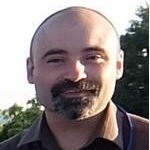Assessments and Advances in Bone Regeneration, Therapies and Healing
A special issue of Bioengineering (ISSN 2306-5354).
Deadline for manuscript submissions: closed (30 November 2019) | Viewed by 35793
Special Issue Editors
Interests: tissue engineering; biomaterials; bone modeling, remodeling and healing; angiogenesis; stem cells; cell expansion and differentiation
Special Issues, Collections and Topics in MDPI journals
Special Issue Information
Dear Colleagues,
Bone loss can occur as a result of various pathologies, traumas, and injuries, and poor bone healing leads to functionally debilitating conditions, loss of self-sufficiency, and deterioration in quality of life. Given the increasing incidence of facial trauma and the emergence of new procedural techniques, advanced scaffolds are currently developed as substitutes for bone tissue engineering. This growing worldwide clinical demand for bone regeneration is a problematic issue in orthopaedic and maxillofacial surgery. The application of autologous bone is still the standard in bone transplantation. Due to the limited quantity of bone available for harvesting and the poor quality of bone transplants, especially in elderly patients due to bone diseases such as osteoporosis, surgeons are looking for alternatives such as bone substitute materials. Ideal grafting material enable the regeneration of bony defects up to the condition of a restitution ad integrum and should combine the basic mechanisms of fracture healing, namely, osteogenesis, osteoinduction, and osteoconduction.
In the last few decades, a variety of bone substitute materials with different physicochemical properties have been developed and analyzed to optimize the process of bone regeneration. Furthermore, various different growth factors, cytokines and antibiotics have been incorporated into bone substitutes and matrices as so-called “composite bone grafts” in order to enhance bone healing. Moreover, different tissue engineering strategies, such as combinations with extracellular matrix proteins and/or different cell types (e.g., osteoblasts, mesenchymal stem cells, or endothelial cells) have been developed with the aim of improving the regenerative properties of bone substitute materials. However, no alternative to autologous bone has been found; thus, there is a need for ongoing research to develop a composite bone graft that combines osteogenesis with inductive and conductive properties. In this context, preclinical in vitro and in vivo studies, as well as clinical trials analyzing fundamental molecular processes, are crucial to define the regeneration mechanisms of new materials and tissue engineering concepts. In the same time, successful clinical management of bone pathologies, regeneration, and healing requires an understanding of the repair biology, advantages, and limitations of current fixation methods, and the feasibility of and selection criteria for grafting approaches including the use of viable cells, biologics, and physical stimulation.
This Special Issue focuses on the various aspects of assessments of bone regeneration, therapies, and healing, and the interactions of bone substitutes, materials and scaffolds with cells and tissues. To summarize, it seeks to improve the model and the analyses of the results to improve bone healing.
Thus, we invite contributions of reviews and/or original papers reporting new results in the field of bone substitute development and bone tissue engineering concepts, and 3D materials, including in vitro and in vivo analyses. We also invite original research papers, as well as comprehensive reviews, based on clinical studies, as well as innovative approaches, imaging technologies, and methodologies for assessing bone quality and the optimization of bone regeneration.
We look forward to receiving your contributions to this Special Issue.
Dr. Gael Y. Rochefort
Dr. Anne-Margaux Collignon
Guest Editors
Manuscript Submission Information
Manuscripts should be submitted online at www.mdpi.com by registering and logging in to this website. Once you are registered, click here to go to the submission form. Manuscripts can be submitted until the deadline. All submissions that pass pre-check are peer-reviewed. Accepted papers will be published continuously in the journal (as soon as accepted) and will be listed together on the special issue website. Research articles, review articles as well as short communications are invited. For planned papers, a title and short abstract (about 100 words) can be sent to the Editorial Office for announcement on this website.
Submitted manuscripts should not have been published previously, nor be under consideration for publication elsewhere (except conference proceedings papers). All manuscripts are thoroughly refereed through a single-blind peer-review process. A guide for authors and other relevant information for submission of manuscripts is available on the Instructions for Authors page. Bioengineering is an international peer-reviewed open access monthly journal published by MDPI.
Please visit the Instructions for Authors page before submitting a manuscript. The Article Processing Charge (APC) for publication in this open access journal is 2700 CHF (Swiss Francs). Submitted papers should be well formatted and use good English. Authors may use MDPI's English editing service prior to publication or during author revisions.







